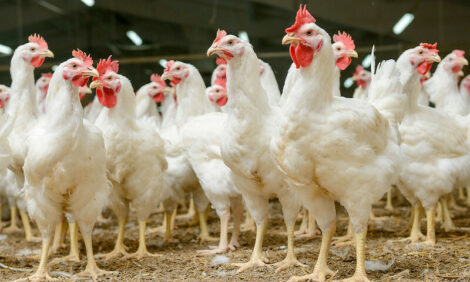



How Flu Shot Manufacturing Forces Influenza to Mutate
US - According to a new study from scientists at The Scripps Research Institute (TSRI), the common practice of growing influenza vaccine components in chicken eggs disrupts the major antibody target site on the virus surface, rendering the flu vaccine less effective in humans."Now we can explain - at an atomic level - why egg-based vaccine production is causing problems," said TSRI Research Associate Nicholas Wu, PhD, first author of the study, published recently in the journal PLOS Pathogens.
For more than 70 years, manufacturers have made the flu vaccine by injecting influenza into chicken eggs, allowing the virus to replicate inside the eggs and then purifying the fluid from the eggs to get enough of the virus to use in vaccines.
The subtype of influenza in this study, called H3N2, is one of several subtypes shown to mutate when grown in chicken eggs, and the researchers say the new findings further support the case for alternative approaches to growing the virus.
"Any influenza viruses produced in eggs have to adapt to growing in that environment and hence generate mutations to grow better," explained study senior author Ian Wilson, D.Phil., Hansen Professor of Structural Biology at TSRI.
The new study shows exactly why egg-based manufacturing is a problem for the H3N2 subtype. As H3N2 influenza has become more prevalent, scientists formulating the seasonal flu vaccine have sought to include this virus and teach the human immune system to fight it. Despite this effort, recent flu vaccines have proven only 33 per cent effective against H3N2 viruses.
Dr Wu used a high-resolution imaging technique called X-ray crystallography to show that--when grown in eggs--the H3N2 subtype mutates a key protein to better attach to receptors in bird cells. Specifically, there was a mutation called L194P on the virus's hemagglutinin glycoprotein (HA). This mutation disrupts the region on the protein that is commonly recognized by our immune system.
This means a vaccine containing the mutated version of the protein will not be able to trigger an effective immune response. This leaves the body without protection against circulating strains of H3N2.
In fact, Dr Wu's analysis shows that the current strain of H3N2 used in vaccines already contains this specific mutation L194P on HA.
"Vaccine producers need to look at this mutation," cautioned Dr Wu.
The researchers say further studies are needed to investigate replacing the egg-based system. "
"Other methods are now being used and explored for production of vaccines in mammalian cells using cell-based methods and recombinant HA protein vaccines," said Professor Wilson.
"There's a huge need for flu vaccine research," added Dr Wu.








